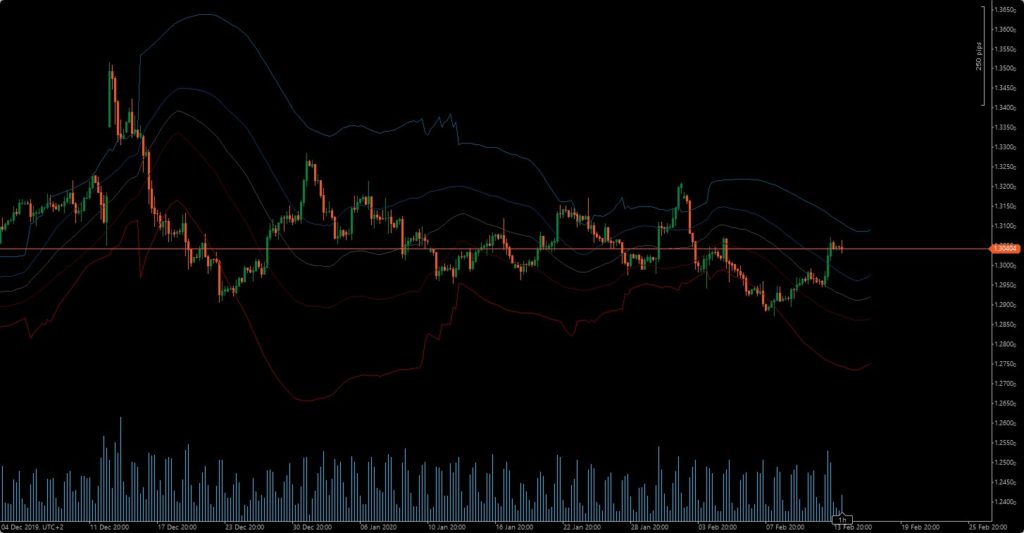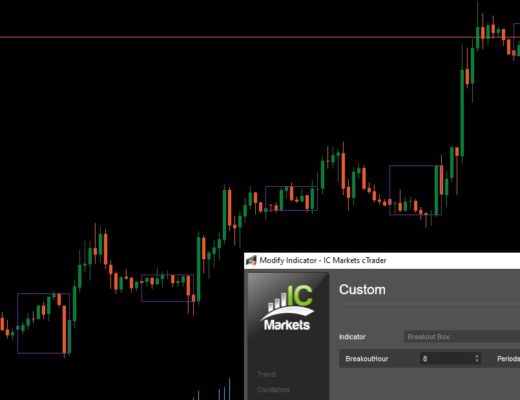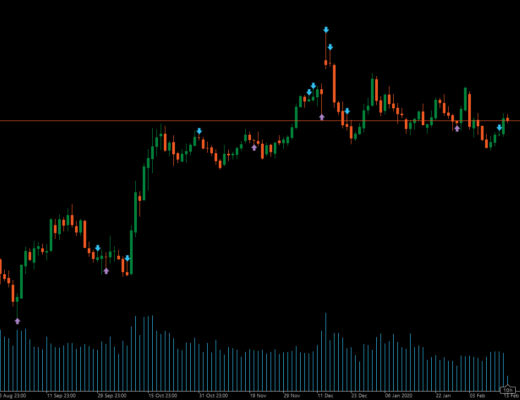This indicator shows how a fixed length linear regression channel changes over time.
Input Parameters
- Source: the price valules used to compute the LRC. Usually set to Close prices.
- MaxBars: the length of the LRC expressed in periods.
- ExtensionBars: the number of bars the LRC is projected into the future.
Screenshots

Code
using System;
using cAlgo.API;
using cAlgo.API.Internals;
using cAlgo.API.Indicators;
using cAlgo.Indicators;
namespace cAlgo
{
[Indicator(IsOverlay = true, TimeZone = TimeZones.UTC, AccessRights = AccessRights.None)]
public class LRCHistory : Indicator
{
[Parameter("Source")]
public DataSeries Source { get; set; }
[Parameter(DefaultValue = 100)]
public int MaxBars { get; set; }
[Parameter(DefaultValue = 10)]
public int ExtensionBars { get; set; }
[Output("Center", LineColor = "#FF3F3F3F")]
public IndicatorDataSeries Center { get; set; }
[Output("Top", LineColor = "#FF025776")]
public IndicatorDataSeries Top { get; set; }
[Output("Bottom", LineColor = "#FF800001")]
public IndicatorDataSeries Bottom { get; set; }
[Output("Dev-Top", LineColor = "#FF013861")]
public IndicatorDataSeries DevTop { get; set; }
[Output("Dev-Bottom", LineColor = "#FF490002")]
public IndicatorDataSeries DevBottom { get; set; }
protected override void Initialize()
{
// Initialize and create nested indicators
}
public override void Calculate(int index)
{
DataSeries series = Source;
int Start = 1;
int Bars = MaxBars;
// Linear regresion
double sum_x = 0, sum_x2 = 0, sum_y = 0, sum_xy = 0;
int start = series.Count - Bars - Start;
int end = series.Count - 1 - Start;
for (int i = start; i <= end; i++)
{
sum_x += 1.0 * i;
sum_x2 += 1.0 * i * i;
sum_y += series[i];
sum_xy += series[i] * i;
}
double a = (Bars * sum_xy - sum_x * sum_y) / (Bars * sum_x2 - sum_x * sum_x);
double b = (sum_y - a * sum_x) / Bars;
// Calculate maximum and standard devaitions
double maxDeviation = 0;
double sumDevation = 0;
for (int i = start; i <= end; i++)
{
double price = a * i + b;
maxDeviation = Math.Max(Math.Abs(series[i] - price), maxDeviation);
sumDevation += Math.Pow(series[i] - price, 2.0);
}
double stdDeviation = Math.Sqrt(sumDevation / Bars);
// draw in future
end += ExtensionBars;
double pr1 = a * start + b;
double pr2 = a * end + b;
Center[index + ExtensionBars] = pr2;
Top[index + ExtensionBars] = pr2 + maxDeviation;
Bottom[index + ExtensionBars] = pr2 - maxDeviation;
DevTop[index + ExtensionBars] = pr2 + stdDeviation;
DevBottom[index + ExtensionBars] = pr2 - stdDeviation;
}
}
}



